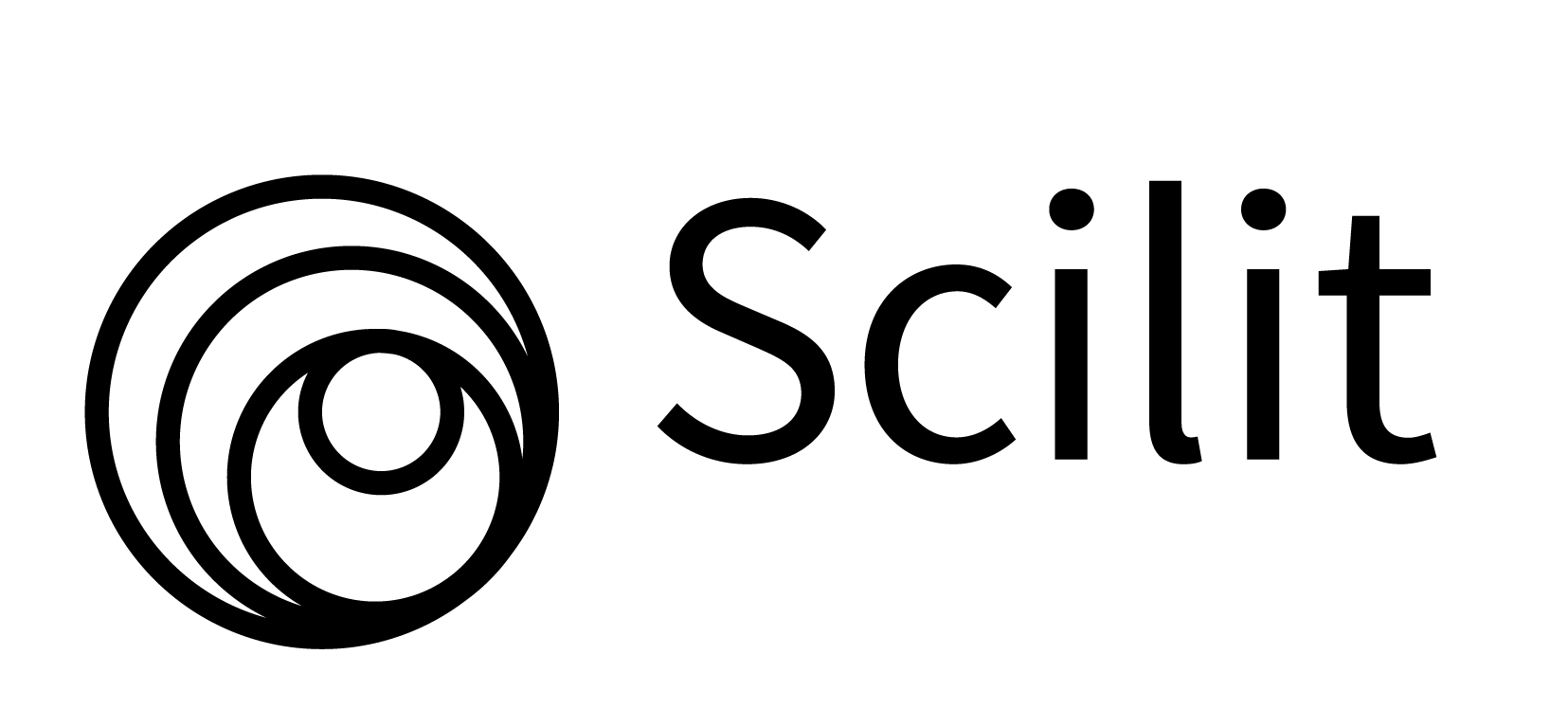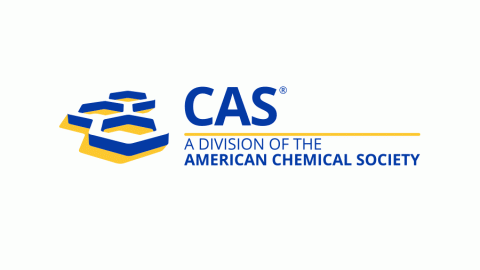Utilization of Pteridophyta species in Cyathea Park, Bali, as traditional medicine agents: A field study and meta-synthesis review
DOI:
https://doi.org/10.55779/nsb15211522Keywords:
Cyathea, plant diversity, Pteridophyta, traditional medicinal agents, meta-synthesisAbstract
Pteridophytes have been studied and preserved in botanical gardens. However, only a few have discovered and documented the medicinal properties of Pteridophyta species. This study aims to promote the utilization of Pteridophyta species in Taman Cyathea, Bali, as traditional medicine agents by conducting a comprehensive literature review with a novelty of 15 years (2008-2022) on the ethnopharmacology and species diversity of the plant division. This research was conducted by directly exploring Pteridophyta species collected in Taman Cyathea, Bali, and a meta-synthesis was carried out related to the potential use of these species as traditional medicinal agents. The STARLITE principle was used for the article search, and ENTREQ was used for transparency in reporting meta-synthetic results. The study was conducted by searching the databases with keywords set according to the inclusion criteria. Findings in the field showed that there were as many as nine species of Pteridophyta identified as having benefits as traditional medicine agents, including Cyathea contaminans (Wall ex Hook) Copel., Asplenium nidus L., Asplenium sp., Selaginella sp., Diplazium esculentum, Angiopteris evecta (G.Forst.) Hoffm, Cyathea sp., Nephrolepis hirsutula (Forst) C. Presl and Dicksonia blumei (Kunze) Moore. The results of the meta-synthesis obtained 49 articles that met the study criteria; leaves, shoots, roots, stems, and hairs were used for various purposes, including restorative materials, planting media, crafts, game materials, and food ingredients. Pteridophyta species treat fever, cough, anticonvulsant, antibacterial, anti-inflammatory, antipyretic, antidiuretic, immunomodulatory, antioxidant, insecticide, larvicide, diabetes, and antiretroviral diseases, among others, so their potential use as traditional medicine agents and candidates for standardized herbs or phytopharmaceuticals have promising prospects in the future. However, its pharmacological, phytochemical, and toxicity properties must be investigated further.
Metrics
References
Adnan M, Siddiqui AJ, Jamal A, Hamadou WS, Awadelkareem AM, Sachidanandan M, Patel M (2021). Evidence-based medicinal potential and possible role of selaginella in the prevention of modern chronic diseases: Ethnopharmacological and ethnobotanical perspective. Records of Natural Products 15:330-355. https://doi.org/10.25135/rnp.222.20.11.1890
Ahmad Faizal, Intan Taufik, Anisah Firda Rachmani, Alda Wydia Prihartini Azar (2020). Antioxidant and antibacterial properties of tree fern Cyathea contaminans. Biodiversitas Journal of Biological Diversity 21:2201-2205. https://doi.org/10.13057/biodiv/d210548
Amoroso VB, Antesa DA, Buenavista DP, Coritico FP (2014). Antimicrobial, antipyretic, and anti-inflammatory activities of selected Philippine medicinal Pteridophytes. Asian Journal of Biodiversity 5:18-40. https://doi.org/10.7828/ajob.v5i1.479
Andrade JMDM, Passos CDS, Dresch RR, Kieling-Rubio MA, Moreno PRH, Henriques AT (2014). Chemical analysis, antioxidant, antichemotactic and monoamine oxidase inhibition effects of some pteridophytes from Brazil. Pharmacognosy Magazine 10:S100-S109. https://doi.org/10.4103/0973-1296.127354
Anwar G, Oktariani, Susatya A, BAN P, Wiryono (2021). Abundance and distribution of medicinal plants in Madapi Forest Kerinci Seblat National Park (KSNP) Rejang Lebong, Bengkulu. In: Proceedings of the International Seminar on Promoting Local Resources for Sustainable Agriculture and Development (ISPLRSAD 2020). 510-517. https://doi.org/10.2991/absr.k.210609.077
Atho MA, Akmal MAS, Riza REN, Sinta SDR, Fatim SF, Dian DNM, Lianah L (2020). The diversity of ferns (Pteridophyta) and their potential use studies in the Ulolanang Kecubung Nature Reserve. BIOEDUSCIENCE: Jurnal Pendidikan Biologi dan Sains 4:73-81. https://doi.org/10.29405/j.bes/4173-814991
Bailly C (2021). The traditional and modern uses of Selaginella tamariscina (P.Beauv.) Spring, in medicine and cosmetic: Applications and bioactive ingredients. Journal of Ethnopharmacology 280:114444. https://doi.org/10.1016/j.jep.2021.114444
Balangcod TD, Balangcod KD (2018). Plants and culture: Plant utilization among the local communities in Kabayan, Benguet Province, Philippines. Indian Journal of Traditional Knowledge 17:609-622. https://nopr.niscpr.res.in/handle/123456789/45073
Baskaran X ravi, Geo Vigila A varuvel, Zhang S zhou, Feng S xiu, Liao W bo (2018b). A review of the use of pteridophytes for treating human ailments. Journal of Zhejiang University-SCIENCE B (Biomedicine & Biotechnology) 19:85-119. https://doi.org/10.1631/jzus.B1600344
Baskaran X, Geo Vigila A, Zhang S, Feng S, Liao W (2018a). A review of the use of pteridophytes for treating human ailments. Journal of Zhejiang University-SCIENCE B 19:85-119. https://doi.org/10.1631/jzus.B1600344
Bedoya LM, Sanchez-Palomino S, Abad MJ, Bermejo P, Alcami J (2001). Anti-HIV activity of medicinal plant extracts. Journal of Ethnopharmacology 77:113-116. https://doi.org/10.1016/S0378-8741(01)00265-3
Cao H, Chai TT, Wang X, Morais-Braga MFB, Yang JH, Wong FC, … Coutinho HDM (2017). 16 Phytochemistry Reviews Phytochemicals from fern species: potential for medicine applications. Springer Netherlands, pp 379-440. https://doi.org/10.1007/s11101-016-9488-7
CASP (2013). Critical Appraisal Skills Programme (CASP) for Qualitative Research Checklist. Available from: https://casp-uk.net/casp-tools-checklists/
Chaparro-Hernández I, Rodríguez-Ramírez J, Barriada-Bernal LG, Méndez-Lagunas L (2022). Tree ferns (Cyatheaceae) as a source of phenolic compounds – A review. Journal of Herbal Medicine 35:100587. https://doi.org/10.1016/j.hermed.2022.100587
Ciawi Y, Salain IMAK, Sutapa AAG (2022). The potency of fern stem as the carbon material for clay-based ceramic filter. In: IOP Conference Series: Earth and Environmental Science 012020. https://doi.org/10.1088/1755-1315/999/1/012020
Darma IDP, Lestari WS, Priyadi A, Iryadi R (2018). Epiphytic ferns and phorophyte trees in the hills of Pengelengan, Tapak and Lesung, Bedugul, Bali. Jurnal Penelitian Hutan dan Konservasi Alam 15:41-50. https://doi.org/10.20886/jphka.2018.15.1.41-50
Darma IDP, Sutomo, Hanum SF, Rahayu A, Iryadi R (2021) Mengenal Koleksi Tematik Kebun Raya Eka Karya Bali dalam Sebuah Taman. 1st ed. Lembaga Ilmu Pengetahuan Indonesia (LIPI) Press, Jakarta, pp 146.
Darwin M, Mamondol MR, Sormin SA, Nurhayati Y, Tambunan H, Sylvia D, … Gebang AA (2021) Quantitative approach research method. In: Tambunan TS (Ed). CV Media Sains Indonesia, Bandung, pp 192.
Ekici B, Sisman EE (2020). Using plants in hospital interior design, tekirdağ example. Turkish Journal of Landscape research 3:1-9.
El-Tantawy ME, Shams MM, Afifi MS (2016). Chemical composition and biological evaluation of the volatile constituents from the aerial parts of Nephrolepis exaltata (L.) and Nephrolepis cordifolia (L.) C. Presl grown in Egypt. Natural Product Research 30:1197-1201. https://doi.org/10.1080/14786419.2015.1046070
Faral HMB, Macaraig RB, Princess Marian B, Mojares, Caramat RJD, Abando DD, Balangi LM, Aguila SC, Villalobos O (2019). The anticonvulsant activity of Asplenium nidus L. (Polypodiaceae) methanolic crude leaf extract in chemically induced tonic- clonic convulsions on Swiss mice. The Steth Archives 12:18-34.
Gultoma HEN, Patanab P, Yunasfic (2015). Utilization and marketing potential of spikes (Cyathea contaminans Wall. Ex Hook) case study of communities in Pancur Batu District and Sibolangit District Henny. Peronema Forestry Science Journal 4:1-11.
Halimatussakdiah H, Amna U, Wahyuningsih P (2018). Preliminary phytochemical analysis and larvicidal activity of edible fern (Diplazium esculentum (Retz.) Sw.) extract against Culex. Journal Natural 18:141-147. https://doi.org/10.24815/jn.v0i0.11335
Halimatussakdiah, Amna U, Mardina V (2020). Antioxidant activity of methanol extract of Diplazium esculentum (Retz.) Sw. leaves collected from Aceh. In: IOP Conference Series: Materials Science and Engineering 1-7. https://doi.org/10.1088/1757-899X/725/1/012082
Hammami S, Snène A, El Mokni R, Faidi K, Falconieri D, Dhaouadi H, Piras A, Mighri Z, Porcedda S (2016). Essential Oil Constituents and Antioxidant Activity of Asplenium Ferns. Journal of Chromatographic Science 54:1341-1345. https://doi.org/10.1093/chromsci/bmw071
Heo N, Yun S, Fernando DD (2021). The complete chloroplast genome sequence of Asplenium komarovii Akasawa, a rare fern in South Korea. Mitochondrial DNA Part B Resources 6:3006-3008. https://doi.org/10.1080/23802359.2021.1961624
Ho R, Teai T, Bianchini J-P, Lafont R, Raharivelomanana P (2011). Ferns: from traditional uses to pharmaceutical development, chemical identification of active principles. In: Working with Ferns. Springer New York, New York, NY, pp 321-346. https://doi.org/10.1007/978-1-4419-7162-3_23
Imran M, Rauf A, Abu-Izneid T, Nadeem M, Shariati MA, Khan IA, … Mubarak MS (2019). Luteolin, a flavonoid, as an anticancer agent: A review. Biomedicine & Pharmacotherapy 112:108612. https://doi.org/10.1016/j.biopha.2019.108612
Jones EJ, Kraaij T, Fritz H, Moodley D (2019). A global assessment of terrestrial alien ferns (Polypodiophyta): species’ traits as drivers of naturalisation and invasion. Biological Invasions 21:861-873. https://doi.org/10.1007/s10530-018-1866-1
Kashyap D, Sharma A, Tuli HS, Sak K, Punia S, Mukherjee TK (2017). Kaempferol – A dietary anticancer molecule with multiple mechanisms of action: Recent trends and advancements. Journal of Functional Foods 30:203-219. https://doi.org/10.1016/j.jff.2017.01.022
Lachal J, Revah-Levy A, Orri M, Moro MR (2017). Metasynthesis: an original method to synthesize qualitative literature in psychiatry. Frontiers in Psychiatry 8:269. https://doi.org/10.3389/fpsyt.2017.00269
Lai HY, Lim YY, Tan SP (2009). Antioxidative, tyrosinase inhibiting and antibacterial activities of leaf extracts from medicinal ferns. Bioscience, Biotechnology and Biochemistry 73:1362-1366. https://doi.org/10.1271/bbb.90018
Larson EC, Hathaway LB, Lamb JG, Pond CD, Rai PP, Matainaho TK, … Franklin MR (2014). Interactions of Papua New Guinea medicinal plant extracts with antiretroviral therapy. Journal of Ethnopharmacology 155:1433-1440. https://doi.org/10.1016/j.jep.2014.07.023
Lestari WS, Nindira Z (2021). Inventarisasi Dan Identifikasi Ulang Koleksi Tumbuhan Paku Kebun Raya Bali I: Suku Pteridaceae. Jurnal Sains dan Teknologi 10:169-180.
LIPI (2022). Kebun Raya Bali (Koleksi Tumbuhan Paku). Balai Konservasi Tumbuhan Eka Karya Bali. Retrieved 2022 April 1st from: https://krbali.lipi.go.id/tumbuhan-paku-lumut.html
Mannan MM, Maridass M, Victor B (2008). A review on the potential uses of ferns. Ethnobotanical Leaflets 12:281-285.
Menezes JCJMDS, Diederich MF (2021). Bioactivity of natural biflavonoids in metabolism-related disease and cancer therapies. Pharmacological Research 167:105525. https://doi.org/10.1016/j.phrs.2021.105525
Muhyi MD, Yani E, Widodo P (2020). Diversity and evenness of medicinal plants in Bantarbolang Nature Reserve Block 19-21, Pemalang, Central Java. Bioeksakta: Jurnal Ilmiah Biologi Unsoed 2:33-41. https://doi.org/10.20884/1.bioe.2020.2.1.1752
Mustacisa-Lacaba MM, Dejarme AB, Albina MB (2021). Preparation, sensory evaluation and effectiveness of Philippine Tree Fern (Cyathea contaminans) as anti-spasm oil. International Journal of Agricultural Technology 17:1461-1470.
Nabila F, Sulistyowati D, Isolina I, Yani R, Sigit DV, Miarsyah M (2021). Diversity of types of pteridophyte epiphytes and spermatophyte epiphytes in the Bogor Botanical Gardens. In: Proceeding of Biology Education 36-50. https://doi.org/10.21009/pbe.4-1.4
Nikmatullah M, Rwnjana E, Muhaimin M, Rahayu M (2020). Potential of Cibodas botanical garden fern and lycophytes collection as the source of medicine. Al-Kauniyah: Jurnal Biologi 13:278-287. https://doi.org/10.15408/kauniyah.v13i2.16061
Oon YN, Chen RJ, Kuan JM, Sit NW (2021). Bioactivity of medicinal plant extracts against human fungal pathogens and evaluation of toxicity using vero cells. Tropical Biomedicine 38:469-475. https://doi.org/10.47665/tb.38.3.090
Popovici PC, Ancuceanu VR, Olaru TO, Stoicescu C-S, Dinu M (2018). Toxicity assessment of Nephrolepis exaltata (L.) Schott, Fam. Nephrolepidaceae. Acta Biologica Marisiensis 1:27-36. https://doi.org/10.2478/abmj-2018-0004
Rai SK, Sharma R, Kumari A, Rasmussen LH, Patil RD, Bhar R (2017). Survey of ferns and clinico-pathological studies on the field cases of Enzootic bovine haematuria in Himachal Pradesh, a north-western Himalayan state of India. Toxicon 138:31-36. https://doi.org/10.1016/j.toxicon.2017.08.010
Ravi BX, Varuvel GVA, kilimas R, Robert J (2015). Apogamous sporophyte development through spore reproduction of a South Asia’s critically endangered fern: Pteris tripartita Sw. Asian Pacific Journal of Reproduction 4:135-139. https://doi.org/10.1016/S2305-0500(15)30010-5
Reginaldo FPS, Bueno PCP, De ICC, De AR, Fett-Neto AG, Cavalheiro AJ, Giordani RB (2021). Molecular networking discloses the chemical diversity of flavonoids and Selaginellins in Selaginella convoluta. Planta Medica 87:113-123. https://doi.org/10.1055/a-1315-0666
Renjana E, Nikmatullah M, Rifqi Firdiana E, Wige Ningrum L, H. Angio M (2021). The potential of Nephrolepis spp. as medicinal plant, a collection of Purwodadi Botanical Garden, based on ethnomedicine and phytochemical studies. Buletin Plasma Nutfah 27:1-10. https://doi.org/10.21082/blpn.v27n1.2021.p1-10
Rindita, Anggia V, Rahmaesa E, Devi RK, Alawiyah LF (2020). Exploration, phenolic content determination, and antioxidant activity of dominant pteridophytes in gunung malang village, mount halimun salak national park, Indonesia. Biodiversitas 21:3676-3682. https://doi.org/10.13057/biodiv/d210834
Roy S, Chaudhuri TK (2020) A comprehensive review on the pharmacological properties of Diplazium esculentum, an edible fern. Pharmaceutics and Pharmacology Research 3:1-9. https://doi.org/10.31579/2693-7247/014
Roy S, Hazra B, Mandal N, Chaudhuri TK (2013). Assessment of the antioxidant and free radical scavenging activities of methanolic extract of diplazium esculentum. International Journal of Food Properties 16:1351-1370. https://doi.org/10.1080/10942912.2011.587382
Sajeev S, Pavithraraj, DB A, Hegde S (2015). Phytoconstituents of Nephrolepis hirsutula and Ptiygrogramma calomelanos, two medicinal ferns of the Western Ghats. Indian Fern Journal 32:244-256.
Semwal P, Painuli S, Painuli KM, Antika G, Tumer TB, Thapliyal A, … Cho WC (2021). Diplazium esculentum (Retz.) Sw.: ethnomedicinal, phytochemical, and pharmacological overview of the Himalayan ferns. Oxidative Medicine and Cellular Longevity 2021:1-15. https://doi.org/10.1155/2021/1917890
Setyawan AD (2009). Traditionally utilization of Selaginella: field research and literature review. Nusantara Bioscience 1:146-158. https://doi.org/10.13057/nusbiosci/n010307
Silalahi M (2014). Bahan Ajar Taksonomi Tumbuhan Rendah. 1st ed. Universitas Kristen Indonesia, Jakarta, pp 1-115.
Silalahi M, Supriatna J, Walujo EB, Nisyawati (2015). Local knowledge of medicinal plants in sub-ethnic Batak Simalungun of North Sumatra, Indonesia. Biodiversitas 16:44-54. https://doi.org/10.13057/biodiv/d160106
Singh A, Rana S, Singh R (2020). Wild and cultivated vegetables of the Indian Himalaya and their use as vegetables and in traditional medicine. International Journal of Vegetable Science 26:385-407. https://doi.org/10.1080/19315260.2019.1638480
Sirichai P, Kittibunchakul S, Thangsiri S, On-Nom N, Chupeerach C, Temviriyanukul P, … Suttisansanee U (2022). Impact of drying processes on phenolics and in vitro health-related activities of indigenous plants in Thailand. Plants 11:1-19. https://doi.org/10.3390/plants11030294
Srithi K, Balslev H, Wangpakapattanawong P, Srisanga P, Trisonthi C (2009). Medicinal plant knowledge and its erosion among the Mien (Yao) in northern Thailand. Journal of Ethnopharmacology 123:335-342. https://doi.org/10.1016/j.jep.2009.02.035
Supiandi MI, Mahanal S, Zubaidah S, Julung H, Ege B (2019). Ethnobotany of traditional medicinal plants used by dayak desa community in sintang, West Kalimantan, Indonesia. Biodiversitas 20:1264-1270. https://doi.org/10.13057/biodiv/d200516
Sureshkumar J, Silambarasan R, Bharati KA, Krupa J, Amalraj S, Ayyanar M (2018). A review on ethnomedicinally important pteridophytes of India. Journal of Ethnopharmacology 219:269-287. https://doi.org/10.1016/j.jep.2018.03.024
Suryana, Iskandar J, Parikesit, Partasasmita R (2018). Ethnobotany of tree ferns in pasir menyan hamlet, Sukamandi village, Subang, West Java, Indonesia. Biodiversitas 19:2044-2051. https://doi.org/10.13057/biodiv/d190609
Taheri Y, Sharifi-Rad J, Antika G, Yılmaz YB, Tumer TB, Abuhamdah S, … Cho WC (2021). Paving luteolin therapeutic potentialities and agro-food-pharma applications: emphasis on in vivo pharmacological effects and bioavailability traits. In: Ciobica A (Ed). Oxidative Medicine and Cellular Longevity 2021:1-20. https://doi.org/10.1155/2021/1987588
Taslim E, Ramadanil, Sulaeman SM (2019). Inventory of terrestrial ferns (Pteridophyta) on the Nokilalaki Hiking Trail in Lore Lindu National Park Area. Biocelebes 13:155-161.
Thomas A, Bindu PK (2021). Assessment of nutritional relevance of Diplazium esculentum by qualitative phytochemical and overall protein profiling. Plant Archives 21:137-142. https://doi.org/10.51470/plantarchives.2021.v21.no2.023
Tong A, Flemming K, McInnes E, Oliver S, Craig J (2012). Enhancing transparency in reporting the synthesis of qualitative research: ENTREQ. BMC Medical Research Methodology 12:181. https://doi.org/10.1186/1471-2288-12-181
Tongco JV V., Villaber RAP, Aguda RM, Razal RA (2014). Nutritional and phytochemical screening, And total phenolic and flavonoid content of Diplazium esculentum (Retz.) Sw. from Philippines. Journal of Chemical and Pharmaceutical Research 6:238-242.
Tungmunnithum D, Thongboonyou A, Pholboon A, Yangsabai A (2018). Flavonoids and other phenolic compounds from medicinal plants for pharmaceutical and medical aspects: an overview. Medicines 5:93. https://doi.org/10.3390/medicines5030093
Vashistha N, Tejasvi A (2021). Selaginella bryopteris (L.): A wonder herb. Plant Archives 21:701-706. https://doi.org/10.51470/PLANTARCHIVES.2021.v21.no1.097
Wang T, Xiao B, Liu E-D, Nguyen KS, Duan J-Q, Wang K-L, Yan Y-H, Xiang J-Y (2020). Rediscovery of Angiopteris tonkinensis (Marattiaceae) after 100 years, and its revision. PhytoKeys 161:1-9. https://doi.org/10.3897/phytokeys.161.54912
Wardani W (2018). Study on production potential of adventitious root of the scaly tree fern Cyathea contaminans in West Java and North Sumatra. Jurnal ilmu-ilmu hayati 17. https://doi.org/10.14203/beritabiologi.v17i3.3366
Warseno T (2015). Ex-situ conservation of some rare and critical plants species using in-vitro method in the Bali Botanic Garden. Masyarakat Biodiversitas Indonesia 1:1075-1082. https://doi.org/10.13057/psnmbi/m010518
WFO (2022). World Flora Online Taxonomic Backbone. Retrieved 2022 November 13 from: http://www.worldfloraonline.org/
Wu D, Li L, Ma X, Huang G, Yang C (2020). Morphological and anatomical adaptations to dry, shady environments in Adiantum reniforme var. sinense (Pteridaceae). PeerJ 8:1-15. https://doi.org/10.7717/peerj.9937
Xie Y-Z, Peng C-W, Su Z-Q, Huang H-T, Liu X-H, Zhan S-F, Huang X-F (2022). A practical strategy for exploring the pharmacological mechanism of luteolin against COVID-19/asthma comorbidity: findings of system pharmacology and bioinformatics analysis. Frontiers in Immunology 12. https://doi.org/10.3389/fimmu.2021.769011
Xu YM, Mafezoli J, Oliveira MCF, U’Ren JM, Arnold AE, Gunatilaka AAL (2015). Anteaglonialides A-F and Palmarumycins CE1-CE3 from Anteaglonium sp. FL0768, a fungal endophyte of the spikemoss Selaginella arenicola. Journal of Natural Products 78:2738-2747. https://doi.org/10.1021/acs.jnatprod.5b00717
Yu M, Gouvinhas I, Rocha J, Barros AIRNA (2021). Phytochemical and antioxidant analysis of medicinal and food plants towards bioactive food and pharmaceutical resources. Scientific Reports 11:10041. https://doi.org/10.1038/s41598-021-89437-4
Yudianto SA (1992). Pengantar cryptogamae (sistematik tumbuhan rendah). 2nd ed. Tarsito, Bandung, pp 195.
Zannah F, Amin M, Suwono H, Lukiati B (2017). Phytochemical screening of Diplazium esculentum as medicinal plant from Central Kalimantan, Indonesia. In: AIP Conference Proceedings 1-4. https://doi.org/10.1063/1.4983439
Zeng WW, Lai LS (2019a). Anti-melanization effects and inhibitory kinetics of tyrosinase of bird’s nest fern (Asplenium australasicum) frond extracts on melanoma and human skin. Journal of Bioscience and Bioengineering 127:738-743. https://doi.org/10.1016/j.jbiosc.2018.11.005
Zeng WW, Lai LS (2019b). Multiple-physiological benefits of bird’s nest fern (Asplenium australasicum) frond extract for dermatological applications. Natural Product Research 33:736-741. https://doi.org/10.1080/14786419.2017.1405400
Zihad SMNK, Gupt Y, Uddin SJ, Islam MT, Alam MR, Aziz S, … Sarker SD (2019). Nutritional value, micronutrient and antioxidant capacity of some green leafy vegetables commonly used by southern coastal people of Bangladesh. Heliyon 5:e02768. https://doi.org/10.1016/j.heliyon.2019.e02768
Zuhri M, Wiriadinata H, Astuti RS, Hadiwaluyo S (2016). Botanical exploration and crater vegetation survey of Mt. Galunggung, West Java. Journal of Tropical Life Science 6: 69-78. https://doi.org/10.11594/jtls.06.02.02
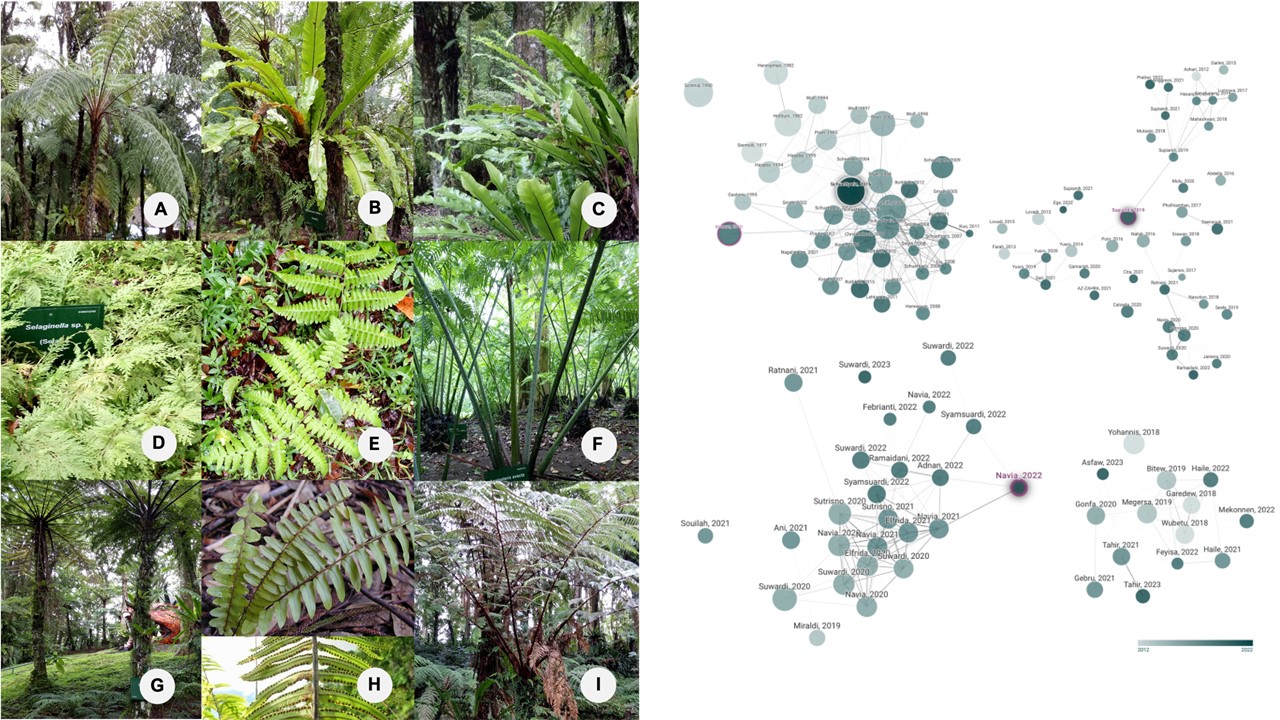
Downloads
Published
How to Cite
Issue
Section
License
Copyright (c) 2023 Ni Ketut Ayu JULIASIH, I Made Dwi MERTHA ADNYANA

This work is licensed under a Creative Commons Attribution 4.0 International License.
Papers published in Notulae Scientia Biologicae are Open-Access, distributed under the terms and conditions of the Creative Commons Attribution License.
© Articles by the authors; licensee SMTCT, Cluj-Napoca, Romania. The journal allows the author(s) to hold the copyright/to retain publishing rights without restriction.
License:
Open Access Journal - the journal offers free, immediate, and unrestricted access to peer-reviewed research and scholarly work, due SMTCT supports to increase the visibility, accessibility and reputation of the researchers, regardless of geography and their budgets. Users are allowed to read, download, copy, distribute, print, search, or link to the full texts of the articles, or use them for any other lawful purpose, without asking prior permission from the publisher or the author.







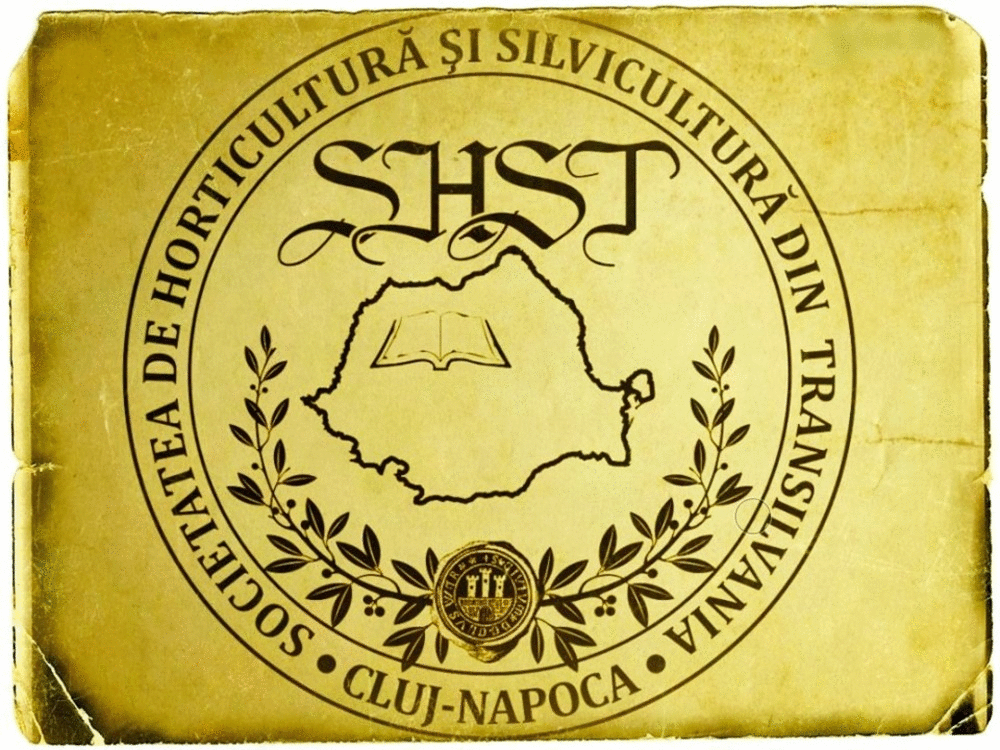
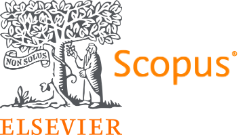




.png)



